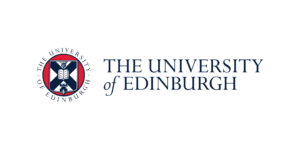Case study: University of Edinburgh
State of Open: The UK in 2021
Phase Two: “UK Adoption”

 Stratos Filalithis, Head of Website & Communication Technologies
Stratos Filalithis, Head of Website & Communication Technologies
Synopsis
The University of Edinburgh actively interact with and contribute to open source solutions. Their open source journey began with a decision to use Drupal as the platform behind their central web content management system, “EdWeb”, which shares the values of flexibility, efficient collaboration, customisation and knowledge sharing. One of the key drivers of their use of open source is its collaborative nature. Each department within the university has their own web presence and can make their own decisions about the technologies they use, rather than having a central system dictating this.
7.3 University of Edinburgh: An open culture
In conversation with Stratos Filalithis, Head of Website & Communication Technologies
The University of Edinburgh is a Scottish public research university with five main campuses, over 44,500 students and 15,000 plus faculty members. They are far along their digital transformation journey and actively interact with open source solutions and contribute to open source.
The major shift from proprietary to open source at the University of Edinburgh was the decision to use Drupal as the platform behind the University’s central web content management system, “EdWeb”. Drupal’s Code of Conduct aligns with the University’s key drivers for open source adoption and working ethics including increased flexibility, efficient collaboration, stronger customisation, knowledge sharing and a view to building common ways of working across the University.
Along with the Code of Conduct, Drupal has a vibrant community that successfully brings like minded people together to solve similar problems. This community helps the University understand the many ways they can leverage the benefits of open source software. Stratos notes, “We are all talking about similar problems and challenges, and a lot of the time the community comes up with a very brilliant idea. Open source allows us to share it. That realisation highlighted how prominent a place open source needs to have in our approach for a better web site for the University.”
Culture of collaboration
A key driver behind their use of open source is to leverage its collaborative characteristics. Each department has their own web presence and makes their own decision on what technologies they use, with no central system guiding them. Stratos and his team focus on the concept of, “communities of practice,” that not only collaborate
on specific technologies, but have similar areas of interest. He aims to increase the integration between each department and encourage them to speak with each other. “We want to drive everyone in a similar direction. Not only in terms of compliance but in terms of creating common approaches, avoiding duplicates, and increasing collaboration with each other. And open source allows us to do all of that.”
Value creation of open source activities is measured by internal productivity. As Stratos explains, “We focus on our own productivity, i.e. how has our productivity increased, how often can we release new features, how we’ve increased community engagement. We have some benchmarks in place and what we’re looking for is to improve and say, well, we have released so many different things and that made the experience better because instead of waiting three or six months to do something, we now, with open source, do it in two weeks to reach our mile-stone.” The speed, agility and innovation of open source work together to enhance productivity.
The University’s open culture has been expressed in more ways, such as ongoing effort and promotion of Open Educational Resources in their publications and learning & teaching. They host a Wikimedian in residence to empower staff and students to learn new digital skills. Stratos believes that the pandemic has forever altered the educational sector, with universities viewing their virtual estate as a good substitute for their physical premises. The hybrid model of working, teaching and learning is here to stay. Open source platforms will help the University respond.
